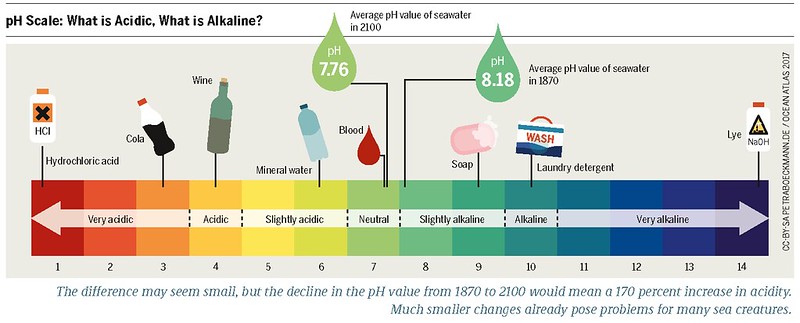Potassium perchlorate, KClO4, is a salt formed from the neutralization reaction between perchloric acid (HClO4) and potassium hydroxide (KOH). When dissolved in water, potassium perchlorate forms a neutral solution with a pH value close to 7. This is because the potassium ion (K+) and the perchlorate ion (ClO4-) do not have any significant acidic or basic properties in water.
Understanding the Neutral pH of Potassium Perchlorate in Water
Potassium perchlorate is a salt that dissociates in water to form potassium ions (K+) and perchlorate ions (ClO4-). These ions do not have any significant acidic or basic properties, meaning they do not donate or accept protons (H+) in water. As a result, the pH of a solution of potassium perchlorate in water remains neutral, with a value close to 7.
The pH of a solution can be affected by the presence of impurities or contaminants. If the potassium perchlorate contains even small amounts of perchloric acid (HClO4), the pH of the solution may be lower than 7 due to the acidic properties of the perchloric acid. Similarly, if the potassium perchlorate is contaminated with other acids or bases, the pH of the solution may be affected.
Ensuring Accurate pH Measurement
To ensure the accuracy of the pH measurement, it is essential to use high-quality potassium perchlorate that is free from impurities and contaminants. When purchasing potassium perchlorate, it is recommended to look for products with a low level of impurities, such as insoluble matter, chloride, and sulfate. Additionally, it is important to follow the manufacturer’s instructions for preparing the solution and measuring the pH value.
Preparing the Potassium Perchlorate Solution
The process of preparing a potassium perchlorate solution for pH measurement is as follows:
- Weigh the desired amount of potassium perchlorate.
- Dissolve the potassium perchlorate in a known volume of distilled or deionized water.
- Stir the solution to ensure complete dissolution.
- Allow the solution to reach room temperature before measuring the pH.
Measuring the pH
To measure the pH of the potassium perchlorate solution, follow these steps:
- Calibrate the pH meter using standard buffer solutions.
- Immerse the pH electrode in the potassium perchlorate solution.
- Wait for the pH reading to stabilize, typically within a few minutes.
- Record the pH value.
Adjusting the pH of Potassium Perchlorate Solutions
If the pH of a potassium perchlorate solution is not neutral, there are steps that can be taken to correct the problem. First, it is essential to check the purity of the potassium perchlorate and ensure that it is free from impurities and contaminants. If the potassium perchlorate is contaminated, it may be necessary to purify it by recrystallization or other methods.
If the potassium perchlorate is pure and the pH of the solution is still not neutral, it may be necessary to adjust the pH by adding acid or base. For example, if the pH is too low (acidic), it can be raised by adding a small amount of a strong base, such as sodium hydroxide (NaOH). Conversely, if the pH is too high (basic), it can be lowered by adding a small amount of a strong acid, such as hydrochloric acid (HCl).
Conclusion
In summary, the pH of a solution of potassium perchlorate in water is typically neutral, with a pH value close to 7. This is because the potassium ion (K+) and the perchlorate ion (ClO4-) do not have any significant acidic or basic properties in water. However, the pH can be affected by impurities or contaminants in the potassium perchlorate. To ensure the accuracy of the pH measurement, it is essential to use high-quality potassium perchlorate and follow the manufacturer’s instructions for preparing the solution and measuring the pH value. If the pH is not neutral, it may be necessary to purify the potassium perchlorate or adjust the pH by adding acid or base.
References:
- Is KClO4 acidic, basic, or neutral (dissolved in water)? – YouTube. https://www.youtube.com/watch?v=JbYHvKlPeK0
- Potassium perchlorate CAS 7778-74-7 | 105076 – EMD Millipore. https://www.emdmillipore.com/US/en/product/Potassium-perchlorate,MDA_CHEM-105076
- Is an aqueous solution of KClO4 acidic, basic, or neutral? Explain. https://homework.study.com/explanation/is-an-aqueous-solution-of-kclo4-acidic-basic-or-neutral-explain.html
- Is KClO4 acidic, basic, or neutral? – YouTube. https://www.youtube.com/watch?v=mWGRacC0OTA
- Potassium perchlorate, reagent grade, ACS, SKU 61305 – GFS Chemicals. https://www.gfschemicals.com/Product/potassium-perchlorate-reagent-acs-cas-7778-74-7-item-80-sku-61305

